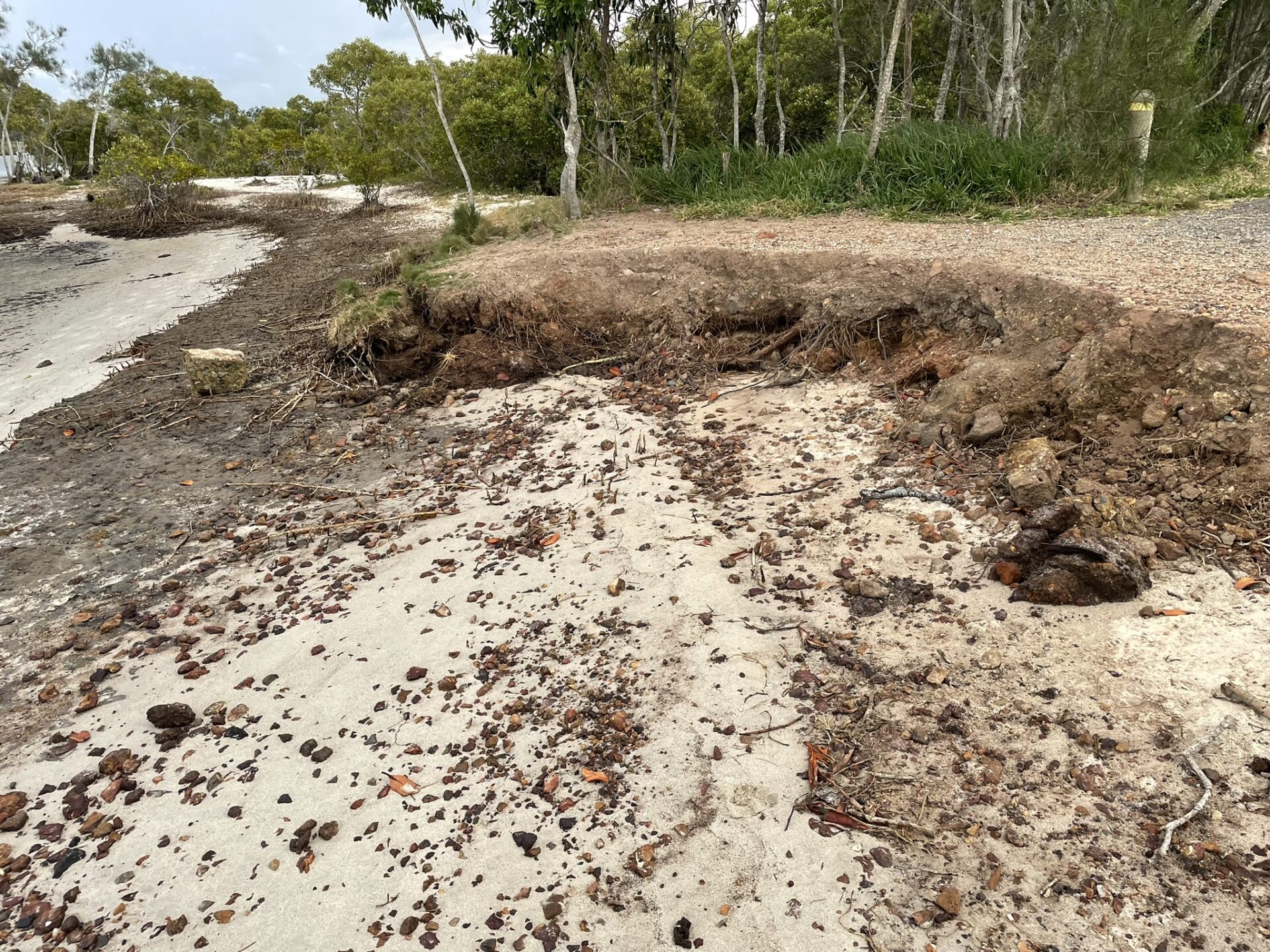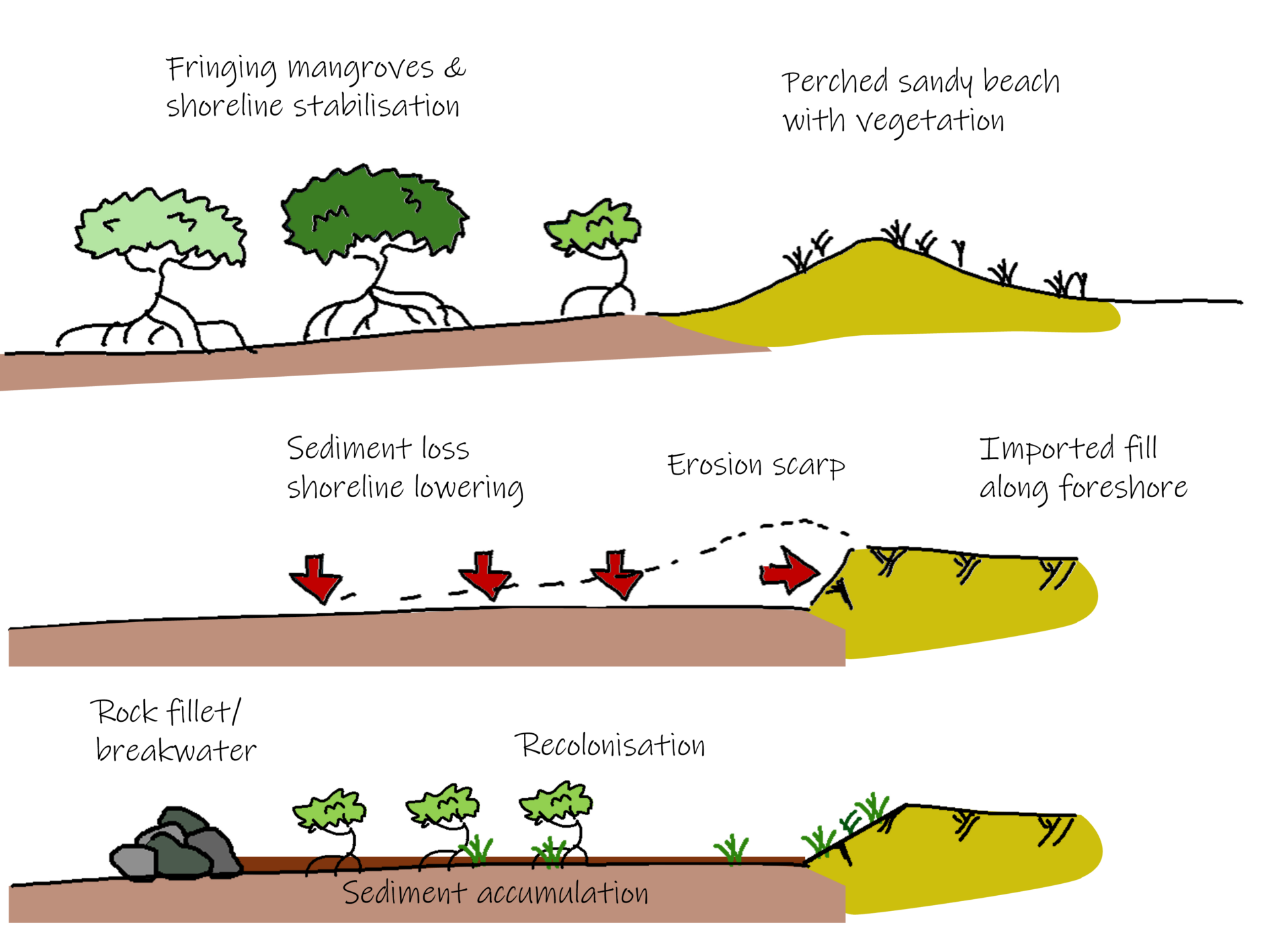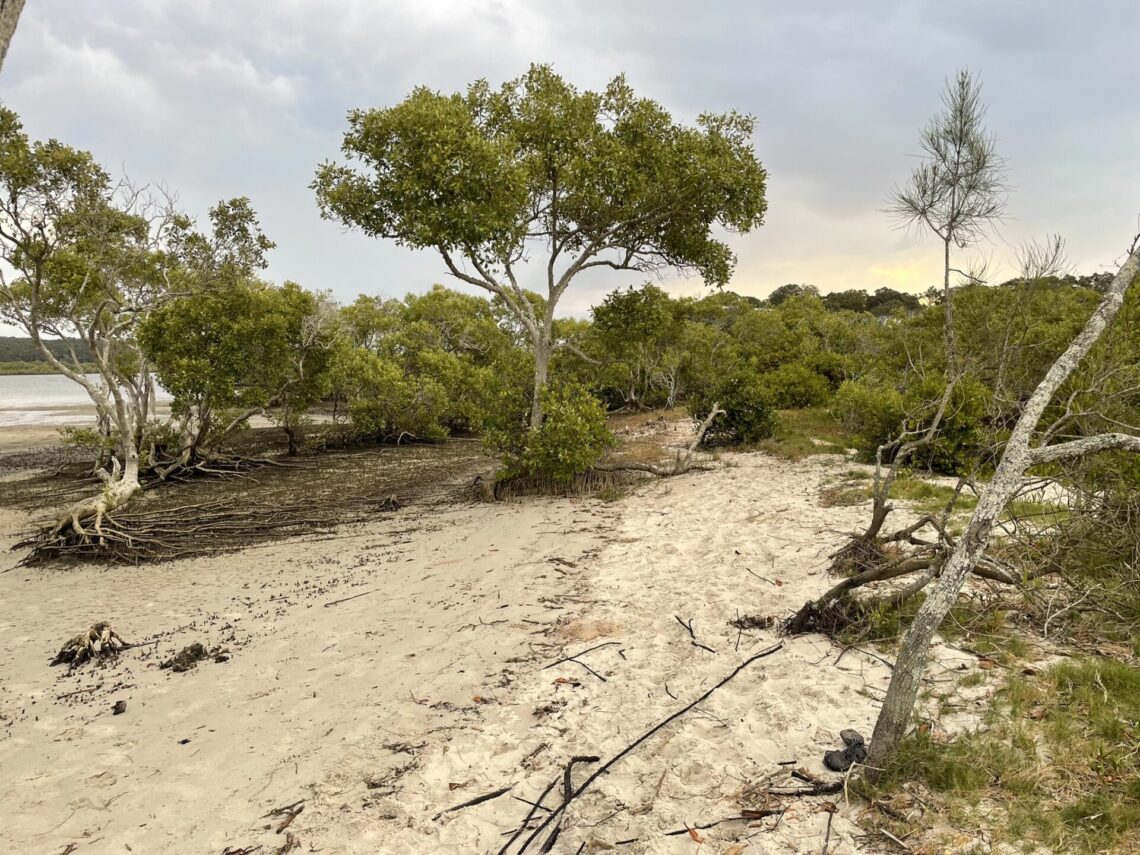By Dan Rodger, Technical Director for Coastal Engineering at JB Pacific
Not everyone knows but there isn’t strictly a formal pathway to working with coastal engineering and Nature-Based Solutions; particularly if you want to integrate ecology and coastal protection structures. For me it’s been a long journey through science, hydrology and engineering degrees, which thankfully has taken me around the world. These days it’s the work in the Pacific that keeps me busy, although I am right at home in my local Moreton Bay or Northern NSW regions of Australia.
I’ve seen the work of a traditional coastal engineer changing; and for many of us it isn’t about piling up rocks or building concrete seawalls; it’s about understanding and working with nature’s own defences. That requires an understanding of coastal processes before we more towards a management option. Recently, I investigated a site where an erosion scarp was dangerously close to infrastructure. The cause? A loss of mangroves that once anchored a perched beach and dune system, absorbing wave energy and stabilising the shore. Without them, the coastline had dropped nearly a meter. This had happened because in this environment the mangroves weren’t just trees – they were the backbone of the small, resilient beach and dune system. But it wasn’t their role in wave energy dissipation (although they probably reduced incident wave height by 10-20%) but the stabilisation effect thanks to the dense root system including prop roots (extending from the trunk), the aerial pneumatophores, and dense array of cable roots growing horizontally beneath the surface.

To address this, new planning and education are important as they can help us to understand the risks of altering any coastal environment – with the impacts able to occur elsewhere in unexpected locations. But we also need more than nature alone to fix it. A nature-only approach through either natural recolonisation or planting is likely to be too slow to protect the infrastructure in my example; which might take over a decade for the ecosystem to rebuild itself. But by using strategically placed engineered structures alongside ecological restoration we can boost natural defences faster whilst offering a minimum standard of protection. This kind of work has never been more important—global mangrove coverage has dropped 20-35% since 1980, leaving coastlines vulnerable. So if you’ve ever wondered what it’s like to be a coastal engineer working with NBS, it’s about blending engineering with nature to create resilient shorelines.

